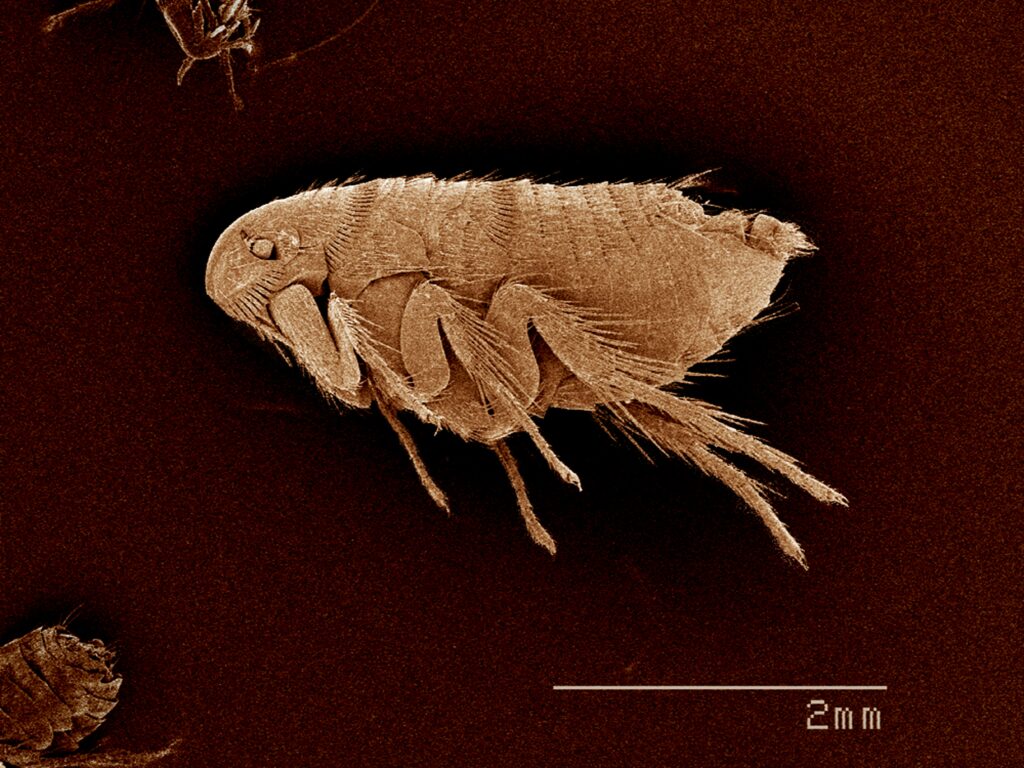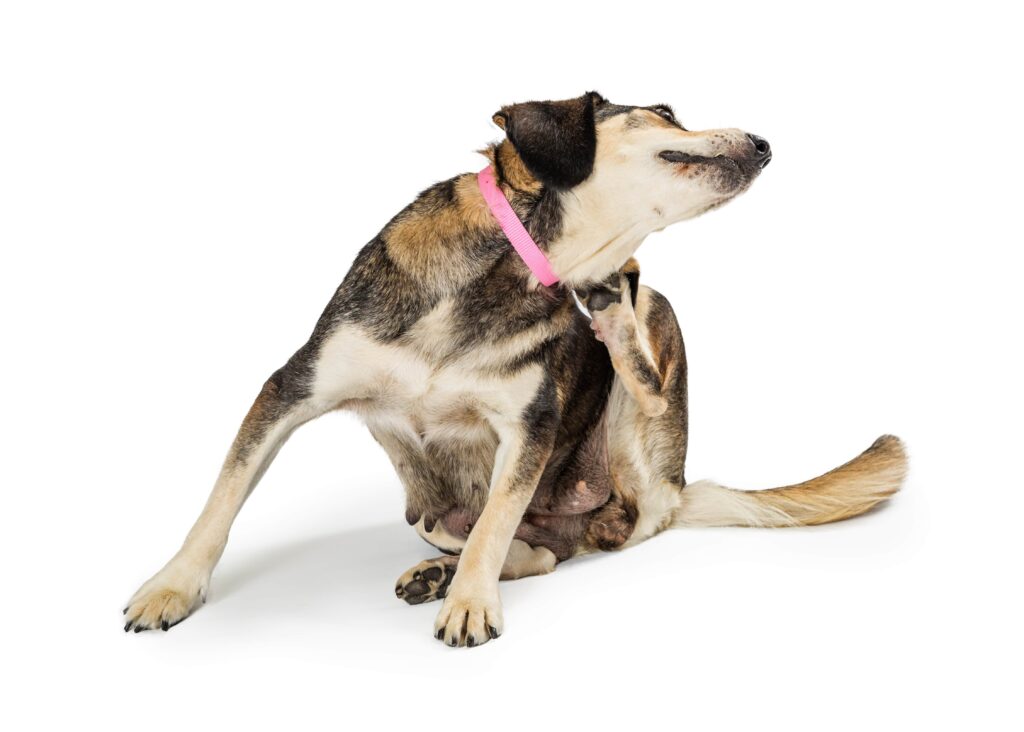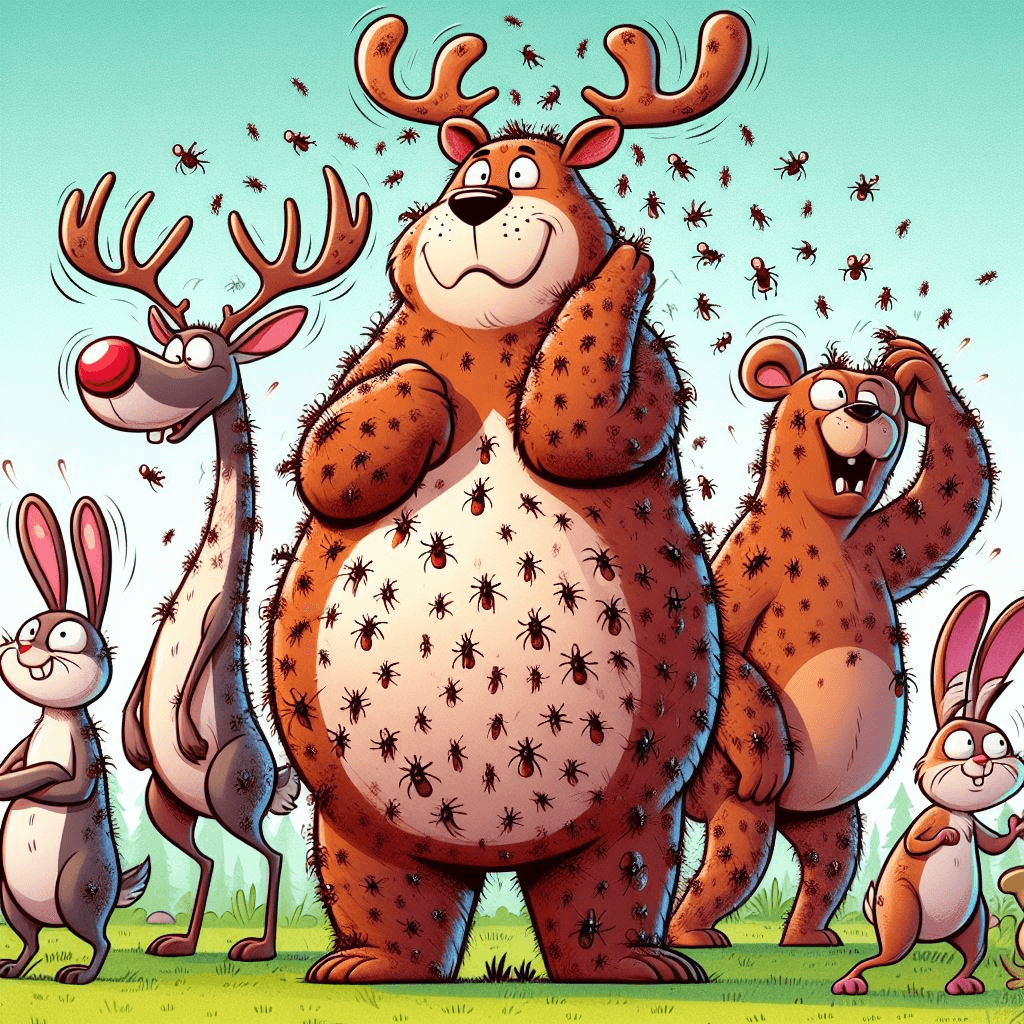In a world teeming with diverse creatures, the term “wildlife” encompasses all living organisms that inhabit natural environments, including terrestrial and aquatic ecosystems. From majestic elephants roaming savannahs to tiny insects buzzing in the air, wildlife encompasses a vast array of species.
On the other hand, fleas are minuscule ectoparasites that belong to the order Siphonaptera. These tiny creatures survive by feeding on the blood of their hosts, which can range from domestic and wild animals to humans.
A pesky nuisance or more?
Fleas are no strangers to pet owners as they are one of the most common parasites affecting our beloved companions. However, it is essential to recognize that fleas extend beyond our furry friends and have established intimate connections with wild mammals and wildlife populations worldwide. While you may associate fleas predominantly with dogs or cats, these ectoparasites exhibit remarkable adaptability and can infest various mammal species sampled in studies around the globe.
Importance of understanding the relationship between wildlife and fleas

Understanding the intricate relationship between wildlife and fleas is crucial for several reasons. Firstly, flea infestations in wildlife pose a considerable threat to both animal populations and human health.
Fleas not only cause discomfort through their bites but can also transmit diseases such as Bartonellosis (Cat Scratch Disease) or bubonic plague. Moreover, comprehending how different species of animals serve as hosts for fleas aids in developing effective management strategies against these parasites.
By studying interactions between wildlife and fleas, we gain insights into transmission patterns and potential reservoirs for diseases that impact both humans and animals. Furthermore, recognizing how flea infestations occur among different animal species helps us identify potential risks for domestic pets when they spend time outdoors or come into contact with wildlife.
For example, interactions between domestic dogs and feral cats can serve as a pathway for flea transmission. Investigating the relationship between wildlife and human fleas is not merely an academic exercise.
It is a vital step in safeguarding the health of both humans and animals. By delving into this subject, we can better understand the dynamics of flea infestations, develop targeted prevention strategies, and mitigate the risks associated with these tiny yet persistent parasites.
Wildlife as Hosts for Fleas

The Menace Beneath the Fur: Wildlife and Flea Infestations
Picture a serene forest, teeming with life. Among the graceful trees and rustling leaves, a hidden threat lurks – fleas! While we often associate these pesky critters with our beloved pets, it may come as a surprise that wildlife can also serve as hosts for these blood-sucking pests.
Squirrels, raccoons brown rats, rabbits, and other animals that call nature their home can become involuntary carriers of fleas. Understanding this intricate relationship between wildlife and fleas is crucial for effective management strategies to safeguard both animal welfare and public health.
An Unlikely Culprit: Common Wildlife Species Carrying Fleas
Our furry friends are not alone in carrying these tiny nuisances; various common wildlife species can also harbor fleas. Take squirrels, those nimble acrobats leaping across treetops – they too can be unwitting hosts.
Raccoons, notorious for their mischievous antics in urban areas, may unknowingly bring along fleas amidst their adventures. Even innocuous rabbits that hop through fields can play host to these bothersome bugs.
Infestation Origins: How Wildlife Becomes Riddled with Fleas
You might wonder how these wild creatures end up bearing such burdensome infestations spread fleas. Well, the answer lies within the circle of life – quite literally! Flea larvae hatch from eggs laid in the animal’s fur by adult fleas.
These larvae then fall onto the ground or get deposited in cozy spots where wildlife frequently nest or dens provide ideal breeding grounds. As natural habitat destruction continues unabated and animal populations intermingle more frequently due to human activities, flea interactions between different species of feral animals will become increasingly inevitable.
For instance, feral cats roaming urban areas may cross paths with wildlife, resulting in the transfer of fleas from one population to another. This intricate web of interactions contributes to the proliferation of fleas, leading to the potential for invasive flea infestations.
Influencing Factors: Habitat and Climate’s Role in Flea Infestation
The prevalence of fleas in wildlife is influenced by a myriad of factors, including habitat and climate. Different species thrive under differing environmental conditions, affecting their susceptibility to infestations. For example, a study conducted by Griffith University revealed that Australian brushtail possums living in urban areas were more likely to harbor flea populations than their counterparts residing in natural habitats.
Climate also plays a crucial role in flea infestation rates among wildlife. Fleas tend to thrive better in warmer environments, where they can reproduce at an accelerated pace.
This tendency explains why regions with hotter climates often experience higher incidences of flea-infested wildlife populations. Our perception of fleas as mere pests plaguing our domestic animals must expand to include their presence in wildlife as well.
Squirrels scurrying through trees, raccoons rummaging through trash cans, and rabbits bounding across meadows may all unwittingly carry these troublesome insects. As we uncover tangible evidence through studies and research efforts such as the global database on invasive species, it becomes clear that understanding the relationship between wildlife and fleas is crucial for effective management strategies aimed at safeguarding both humans and animals alike.
Flea Species Found on Wildlife
Introduction to Different Flea Species Commonly Found in Wildlife
When it comes to the fascinating world of fleas, these tiny creatures have managed to hitch rides on various wildlife species. From squirrels black rats and raccoons to rabbits and beyond, wildlife can serve as carriers for different flea species.
Two of the most common fleas found in wildlife are the cat flea (Ctenocephalides felis) and the dog flea (Ctenocephalides canis). While their names suggest specific hosts, these fleas are not picky eaters and can infest a range of mammal species.
Characteristics and Life Cycle of Each Flea Species
The cat flea is a particularly prevalent parasite that affects both domestic and wild animals worldwide. It is known for its agility in jumping long distances, allowing it to easily latch onto passing hosts. The adult cat flea has a reddish-brown coloration with distinctive backward-facing spines, enabling it to anchor itself securely in its host’s fur or feathers.
A female cat flea can lay up to 50 eggs per day, leading to rapid population growth if left unchecked. On the other hand, the dog flea shares many similarities with the cat flea in terms of appearance but tends to be slightly larger.
Both fleas pass through four life stages: egg, larva, pupa, and adult. Their life cycle can vary in duration from several weeks to months depending on environmental conditions such as temperature and humidity.
Distribution Patterns and Preferred Hosts for Different Flea Species
Due to their ability to adapt and spread rapidly, both cat fleas and dog fleas have achieved a widespread geographic presence. Cat fleas are found in practically all regions where cats or other suitable hosts bring fleas reside—making them a considerable threat to pet owners and wildlife enthusiasts alike. Dog fleas, though they primarily infest domestic dogs, can also be found on other mammals such as foxes or coyotes.
In terms of preferred hosts, cat fleas tend to favor cats (no surprise there!), but they don’t hesitate to feed on other animals, including dogs and various wildlife species. As for dog fleas, their name might suggest a stronger affinity for canines, but they too are opportunistic parasites that will happily feed on any warm-blooded animal within their reach.
Understanding these preferences helps in identifying potential sources of infestations. The presence of geographic spread of different flea species on wildlife is a common occurrence worldwide.
The cat flea and dog flea are among the most prevalent and adaptable fleas known to infest both domestic and wild animals. Their life cycles follow four distinct stages, with each stage having its own unique characteristics.
While cat fleas tend to have a broader distribution and show affinity towards feline hosts, dog fleas focus primarily on dogs while still being versatile in finding alternative hosts among various mammal species. Being aware of these patterns aids in implementing effective flea control measures for both pets and wildlife alike
Implications for Human and Pet Health

Transmission of Fleas from Wildlife to Humans/Pets
The close proximity between wildlife and human settlements creates ample opportunities for the transmission of fleas from wild animals to humans and their beloved pets. Fleas, those pesky little creatures, are opportunistic parasites with a knack for hitching a ride on unsuspecting hosts.
While they primarily infest wild species, they can easily find their way onto domestic pets or even humans who come into contact with wildlife-infested areas. This phenomenon is known as “urban wildlife parasite exchange,” where fleas capitalize on the cohabitation of different species in shared habitats.
When wild animals host fleas, they inadvertently become carriers spreading fleas themselves. These tiny insects travel on the backs of squirrels leaping through tree branches or hitch rides on raccoons rummaging through garbage cans.
Once attached to a new host, fleas seek a blood meal to survive and reproduce. Unfortunately, that delicious blood meal could be provided by our family members, beloved furry companions, or even us.
Risks Associated with Flea Bites (e.g., Itching, Allergic Reactions)
Flea bites are not just irritating; they can drive you—and your furry friends—up the wall with incessant itching! When an infested wildlife creature jumps ship onto your pet or yourself, it’s only a matter of time before these tiny pests get busy sinking their mouthparts into your skin. The saliva of fleas contains proteins that trigger allergic reactions in many individuals, leading to intense itching sensations.
For some unlucky souls who have especially sensitive skin or pre-existing allergies, flea bites can cause redness and swelling far beyond what’s considered normal annoyance. Scratching these bites can lead to secondary infections due to broken skin—a gateway for harmful bacteria that lurk on flea bodies—to enter your system.
Potential Transmission of Diseases by Infected Fleas
Beyond the physical discomfort caused by flea bites, there is a more sinister aspect to these tiny parasites. Fleas are infamous for their ability to transmit diseases not only among wildlife but also to humans and domestic pets.
Invasive flea infestations, proliferating due to the rise in urban wildlife populations, pose a considerable threat to public health. Certain diseases carried by fleas can have serious consequences.
For example, fleas can harbor bacteria that causes bubonic plague. While thankfully rare today, this historical disease reminds us of the potential danger associated with these seemingly harmless insects.
Additionally, fleas can transmit parasites such as tapeworms or spread other pathogens that cause illnesses like murine typhus. In order to prevent the transmission of such diseases from wildlife-hosted fleas to our nearest and dearest, it’s crucial for pet owners and individuals residing near wildlife-rich areas to remain vigilant and take necessary precautions.
The presence of fleas on wild animals should not be taken lightly. These elusive arthropods have a cunning knack for hitchhiking their way into our lives through unsuspecting wildlife occurrences.
From itching and allergic reactions caused by their bites to potential transmission of dangerous pathogens, fleas pose a significant risk to human and pet health alike. Understanding these implications and taking proactive measures against flea infestations is essential in preserving our well-being while coexisting with wild species around us—because after all, we share more than just this planet; we share an intricate ecosystem where invasive and native species contribute both beauty and challenges.
Wildlife Management Strategies to Control Fleas

The Importance of Managing Flea Populations in Wildlife for Public Health Reasons
Fleas, as common parasites, pose a considerable threat to both domestic and wild animals, including wildlife. Therefore, implementing effective flea control measures becomes crucial not just for the well-being of these animals but also for public health reasons.
Wildlife acts as a reservoir for fleas and can serve as vectors in transmitting fleas to humans and pets. By managing flea populations in wildlife habitats, we can mitigate potential disease transmission and minimize the risk of flea infestations affecting humans and their beloved pets.
Overview of Effective Methods to Control Fleas in Wildlife Habitats
Controlling fleas in wildlife habitats requires a multi-faceted approach that considers environmental modifications and biological controls. Environmental modifications involve manipulating the habitat to make it less suitable for fleas to thrive.
For example, reducing areas with dense vegetation or implementing regular landscaping practices can help decrease flea populations by limiting suitable breeding grounds. Biological controls are another valuable strategy.
Introducing natural predators or parasites that feed on fleas can effectively manage their populations. For instance, some species of nematodes feed on flea larvae found in the environment, acting as biological control agents.
Moreover, targeted treatments aimed at specific wildlife species known to carry or transmit certain types or strains of fleas can be employed. These treatments may involve administering oral medications or using topical treatments that kill fleas without harming the host animal.
Case Studies and Examples
Highlighting Specific Instances Where Wild Animals Carry or Transmit Fleas
A myriad of case studies exists that demonstrate how different species of wild animals contribute significantly to flea populations and their transmission. For example, studies have shown that red foxes (Vulpes vulpes) are carriers of fleas, particularly the species Ctenocephalides canis, which is commonly associated with domestic dogs and cats. These fleas can transmit harmful bacteria and diseases to other animals, including humans.
Additionally, feral cats (Felis catus) have been identified as carriers of fleas that can infest both native animals and introduced mammals. Feral cats often become a source of flea infestations in urban areas where they interact with domestic cats and potentially transmit fleas to them.
These examples illustrate the importance of understanding the specific wildlife species involved in flea transmission and infestation. By studying these cases and implementing appropriate management strategies, we can effectively control flea populations in wildlife habitats and ultimately reduce their impact on public health.
Conclusion
Understanding the intricate relationship between wildlife and fleas is paramount for implementing effective management strategies. By recognizing the role of wildlife as hosts for fleas, we can develop targeted methods such as environmental modifications, biological controls, and case-specific treatments to control flea populations in their habitats.
This not only protects wildlife but also minimizes the risk of flea-borne diseases affecting humans and pets. In our pursuit of coexistence with nature’s creatures, it is imperative that we prioritize the well-being of both wild animals and ourselves by actively managing flea populations.
Through ongoing research, education initiatives, and collaborative efforts with experts in public health and wildlife management, we hold the power to create a harmonious balance where all species thrive while minimizing risks associated with harmful parasites like fleas. Together, let us embark on this journey towards a future where healthy ecosystems flourish alongside our cherished companions – free from the burdensome presence of these tiny but tenacious pests.
Eradicate Fleas with D-Termination: Las Vegas’ Leading Pest Control Service!

If you’re facing flea issues on your Las Vegas property, fear not, because D-Termination is ready to assist you. Our skilled team specializes in eliminating flea infestations and restoring comfort and serenity to your space. Bid farewell to fleas by selecting D-Termination for efficient pest control today!
You can reach out to us at 702-919-6310 or visit dtermination.com to schedule your flea control service and regain your space from these troublesome pests.
Frequently Asked Questions:
Yes, animals can indeed carry fleas.
Squirrels can be carriers of fleas.
Fleas can be found in the wild, especially in areas where animals inhabit.
Raccoons are known to carry fleas.








